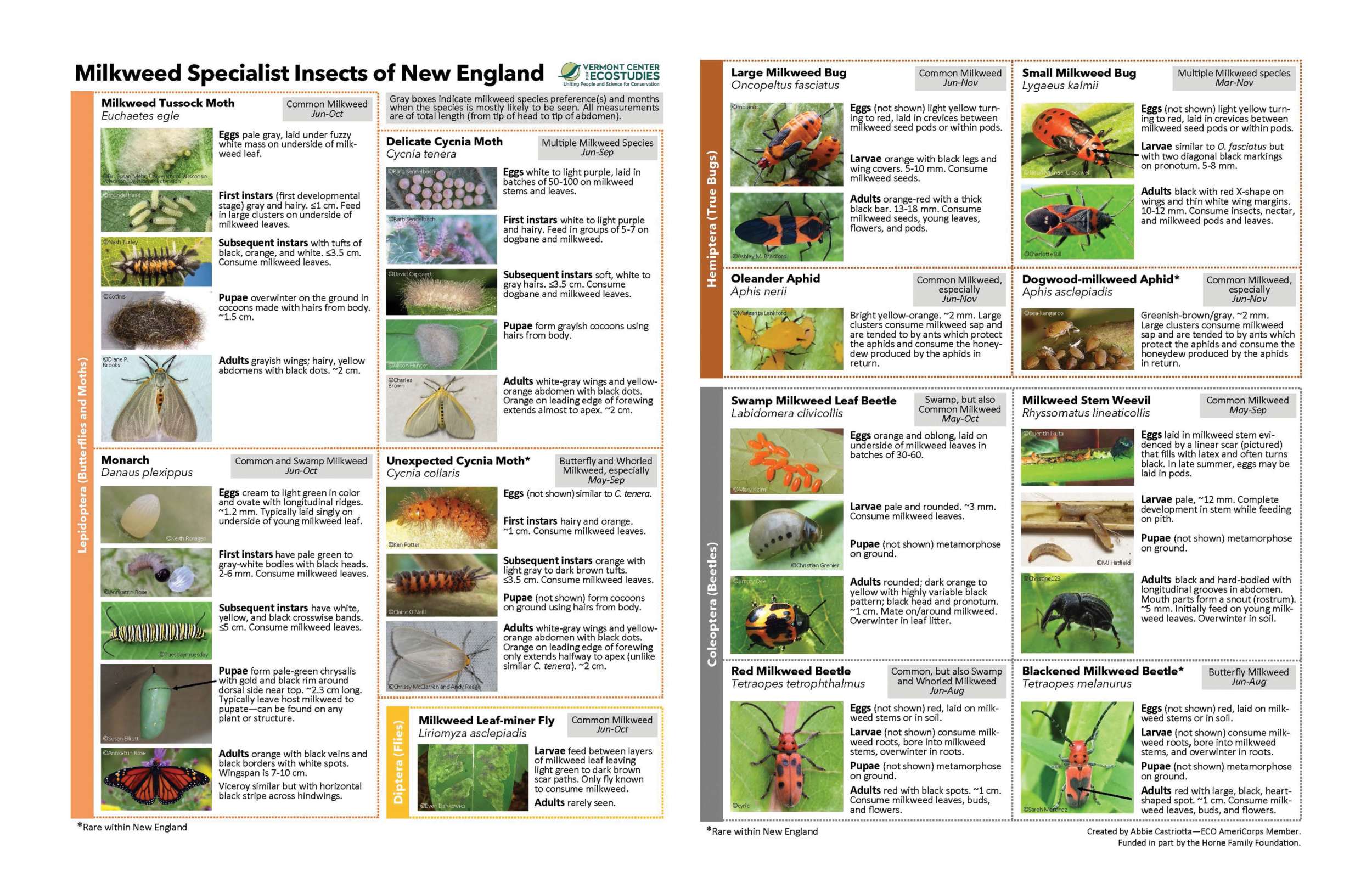
With the thermometer stuck in the single digits for the foreseeable future, perhaps you find yourself flipping through seed catalogs or scrolling your summer camera roll – anything to fill your mind with warm thoughts. I have been browsing insect field guides, studying for (okay, maybe more like daydreaming of) the summer field season when I will be working on the Pollinators Under Power Lines and the Montane Invertebrate projects.
Though I am now enamored by the diversity and mystery of insects, I will admit that they had not captured my attention until I began my ECO AmeriCorps service term at VCE. I spent part of the fall measuring and identifying last summer’s insect specimens and creating guides to the Bumble Bee species of New England. Upon reflection on last summer’s Pollinators Under Power Lines pilot season (which involved surveying for milkweed specialist insects), Jason Hill and I realized that we need a field guide illustrating all life stages of these insects to make it easier for ourselves, future interns, and community scientists to identify milkweed specialist insects under power lines and beyond. Finding that such a guide didn’t exist for our bioregion, I set out to create a guide to Milkweed Specialist Insects of New England.
The resulting guide (linked below as a printable PDF) includes 13 insects that are almost exclusively found on milkweed and rely on the plant for at least part of their life cycle. Their aposematic coloring (“the colors advertise the fact that the organism is not good to eat”; US Forest Service) and unique adaptations to the toxins found in milkweed make them a fascinating insect group to learn about during these cold and dark winter months. Feel free to print a guide for your own use and share it with friends. As with many insect groups, there is still much for us to learn about the life cycle events, distribution, and population size of these milkweed specialists. With more observations of milkweed specialist insects by community scientists, we will begin to fill these gaps in data. Happy studying and we look forward to seeing your observations on iNaturalist and eButterfly.
Printable two-page PDF: Milkweed Specialist Insects Guide

Hi Abbie: What a great job you did in compiling this guide! I’m delighted to have it. Thank you.
Shirley Zundell
I’m glad it will be put to use!
Thank you for providing the guide to milkweed specialists!!
It makes us all the more eager for summer and milkweed so we can identify these insects in their various stages. Very well done!!
Win
Awesome! Let us know what you find!
Excellent work, Abby. Thank you.